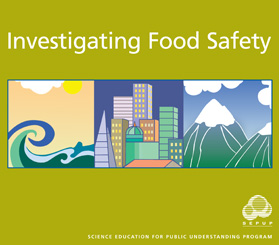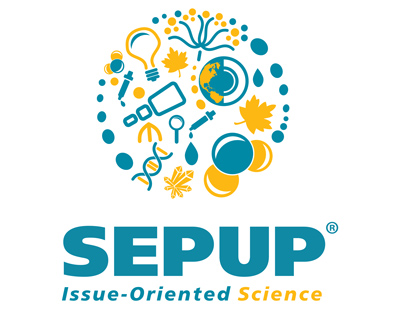Investigating Food Safety – Module Issues in the News for Students

News
Determining the Safety of Drinking Water and Swimming Pools
More people got sick from drinking water and swimming in pools in 1999–2000 than in previous years. According to the Center for Disease Control (CDC), there were 39 disease outbreaks involving drinking water in 25 states. That is more than double the 17 outbreaks reported in 1997-–98. Most of the outbreaks were caused by water from private wells. Although public water sources are being made safer all the time, private wells are not as regulated. “Many of these drinking-water outbreaks are preventable,” said Sherline Lee of the CDC. “Whether from the tap or a bottle, the public should think about where their water comes from and whether it has been made safe.”
Even swimming in chlorinated public pools is not risk-free. About 70% of the outbreaks from swimming pools were caused by cryptosporidium, a chlorine-resistant parasite. In 1999––2000, nearly 2,100 people in 23 states got sick from pools and other recreational water sources.
Does a Healthy Diet Poses a Different Set of Risks?
Greenland’s native population, the Intuits, has very few cases of heart disease, diabetes, and obesity. This is tied to their diet, which consists of polar bears, seals and, whales. Recently however, scientists have discovered the Intuits have “unacceptable levels” of environmental toxins, including mercury, lead, cadmium, and persistent organic pollutants (POPs). These toxins can lead to health effects such as reduced fertility, genetic damage, and deformities in children.
These toxins are not found on Greenland, so how did the Intuits get exposed to these toxins? They are carried north by sea currents and weather patterns. Polar bears, seals, and whales are exposed to the pollutants in the environment. The toxins bioaccumulate and move up the food chain to humans.
Genetically Modified Fish – Who Determines the Risk?
Thanks to genetic engineering, there are now salmon that grow twice as fast as wild salmon. Although these fish have been grown experimentally, they have not been approved by the government to be sold as food. Aqua Bounty Farms, a company based in Waltham, Massachusetts, is considering asking for such approval. Fish farming would become more profitable, but environmentalists fear these genetically modified fish could put the wild population in danger. If they escaped, they might compete more effectively for food and mates.
In the United States, the Food and Drug Administration (FDA) will decide if the genetically-modifed fish are safe for people to eat. The FDA does not generally publish arguments or have public discussions when it determines whether a new drug is safe for public use. For this reason, a non-profit group called the Pew Initiative on Food and Biotechnology questions whether the FDA is the right agency to make this decision.
UV Radiation Disinfects Water
Water used in food processing must be disinfected in order to prevent illness. Usually this is done with ultraviolet (UV) radiation because it kills disease-causing molds, viruses and bacteria. Because UV radiation must be very close (within one inch) to the microbe to kill it, it has been expensive and time-consuming to use UV to disinfect water. In the past, water was pumped through long, narrow tubes with lots of UV lights.
Researchers at Georgia Institute of Technology have developed a pump that works much better. A small cylinder rotates inside of a larger stationary cylinder that has UV lamps on it. The water circulates between the two cylinders. This creates small vortexes, or whirlpools, which allow UV radiation to reach more water particles. Fewer UV lights are needed than with this method. This saves energy and reduces costs. Preliminary tests also show that the pump kills 200% more disease-causing organisms.
Researchers are looking into other applications of this technology. It may be used to disinfect swimming pool water and pasteurize fruit juice.

